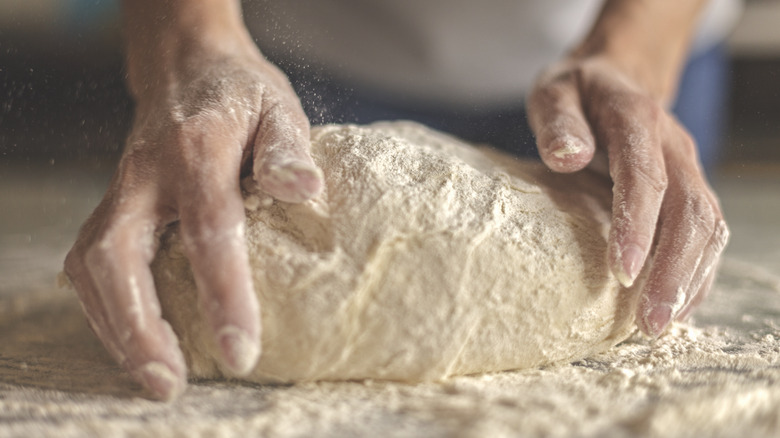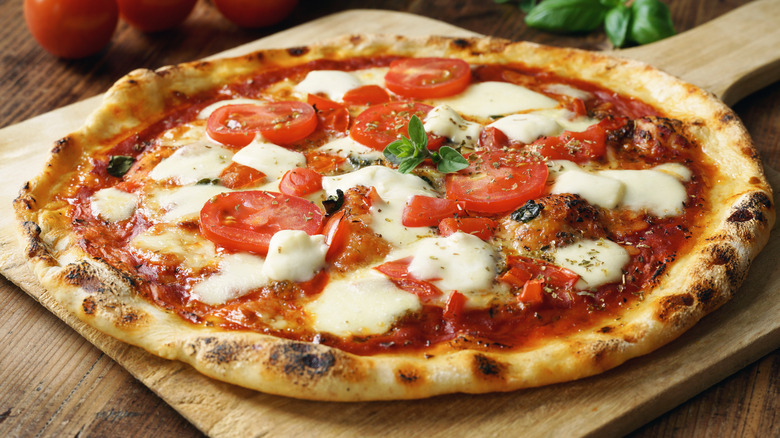The Biggest Mistake You're Making With Your Homemade Pizza Dough
Pizza is typically viewed as a quick and easy meal. However, that doesn't mean one of the world's favorite dishes should be whipped up in a flash, especially when it's made from scratch. The biggest blunder with homemade pizza lies in a trait all too familiar to our fast-paced lives: impatience. This cardinal sin derives from the failure to recognize that pizza dough is a culinary symphony with time as its conductor and patience as its star.
At the heart of this haste-induced disaster is yeast, which serves as the dough's maestro. When yeast is hurried into action, it can't perform to its best ability. To coax out its full potential, it needs a soothing bath of lukewarm water and the luxury of time. Rushing this step deprives yeast of the opportunity to thrive, resulting in a crust that lacks the desired swell and chewiness. Instead, you're left with a dull, lifeless canvas for your pizza toppings.
Pizza dough isn't a slapdash creation; it's a canvas for flavor. Allowing the dough to mature is akin to aging fine wine. A slow fermentation process, ranging from a few hours to an overnight stint in the refrigerator, unleashes the yeast's alchemical powers. During this prolonged rest, the dough undergoes a transformation, acquiring depth and complexity in its profile while its texture turns ethereal — light, airy, and downright delicious.
Pizza dough requires plenty of patience
Another pitfall when it comes to pizza-making is the disregard for the delicate dance of kneading — a routine that demands precision and mindfulness. Not kneading the pizza dough long enough can result in overly tight gluten, or conversely, an underdeveloped dough without the ideal structure. The stretching phase, too, can fall victim to overzealousness. Hastily tugging and pulling the dough can lead to disastrous consequences such as tears, uneven thickness, and a general deficit of elegance in your crust's presentation. Furthermore, the kitchen environment plays a critical role in this pizza-making saga. Inconsistent temperatures can sabotage the fermentation and rise, which is why a warm, draft-free atmosphere is non-negotiable. Otherwise, the dough can end up flat and uninspiring.
Sure, many of us have made mistakes while rustling up pizza. That said, practice makes perfect. Homemade pizza is not just a recipe; it's a lesson in the art of waiting. Hustling the process robs the pizza dough of its potential, resulting in a lackluster 'za. So, embrace the slow pace, let the yeast enjoy its soak, grant the dough its well-deserved slumber, and knead and stretch with care. In the world of pizza, patience is indeed the most delectable virtue.

